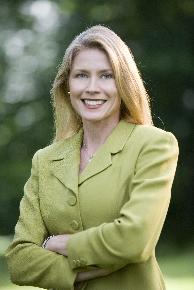
What Is LEED?
The Leadership in Energy and Environmental Design (LEED) Green Building Rating System™ is the nationally accepted benchmark for the design, construction, operation and performance of commercial buildings as well as homes. It was developed almost ten years ago by the United States Green Building Council ( www.usgbc.org )and is rapidly becoming the Green Building Rating system that many progressive US government municipalities from state to local level, as well as international, are requiring their buildings to be built to these exacting sustainable standards that reduce site disturbance, and energy and water consumption while using local and sustainable building practices and no-toxic materials, creating a healthy indoor and outdoor environment for all.
Did you know?
The built environment has a profound impact on our natural environment, economy, health and productivity. According to the USGBC, in the United States alone, buildings account for:
- 36% of total energy use/65% of electricity consumption
- 30% of greenhouse gas emissions
- 30% of raw materials use
- 30% of waste output/136 million tons annually
- 12% of potable water consumption
How to Get LEED Certified for a New Commercial Building
To Begin
First hire an Architectural/Engineering firm that has LEED, AP's (Leadership in Energy and Environmental Design, Accredited Professionals) on staff. This will ensure at the on-set of the project that the owners, stakeholders and design team understand what it will take in preliminary planning, construction and financing, to reach a realistic LEED certification goal and its required prerequisites and points.
• Certified 40 - 49 points
• Silver 50 - 59 points
• Gold 60 - 79 points
• Platinum 80 or more points
Register the Project
Once the design team agrees that the project is a viable candidate for LEED Certification and can meet all of the the LEED prerequisites in 7 required topic areas, then the project can be registered on-line at the GBCI website, (Green Building Certification Institute) at www.gbci.org.
Registration is not only required, but is an important first step that enables communications with GBCI, outlines costs, allows access to software tools, credit details and other related information.
Document Submittal
You have the option of submitting all of your documents for review at the end of construction or splitting the certification registration into 2 phases; Design and Construction phase. Please note; should you choose the later option and submit your design documentation up front, you will not be awarded any credits until after the construction phase is completed. Instead, your attempted credits will be listed as either
"Anticipated" or "Denied". Once all the construction documentation has been reviewed, the design phase "Anticipated" credits will labeled as "Achieved" or "Denied".
7 Required Topics Areas for LEED Certification for New Buildings
1. Sustainable Sites (SS) - 26 possible points w/ 1 prerequisite
In choosing a building site, LEED rewards points for selecting a previous
disturbed site; reducing construction impact, runoff, waste, and other pollution; managing storm-water, erosion, and heat island effect; providing regional transportation, community connectivity, light pollution reduction and other required site and environmental management plans.
2. Water Efficiency (WE) - 10 possible points w/1 prerequisite
Buildings use 12 - 15 % of our total potable water. The goal of WE is to reduce the quantity of the water needed for the building and to reduce the municipal water supply and treatment burden. This can be accomplished in many ways including water efficient landscaping, innovative wastewater technologies and water use reduction plans and products.
3. Energy & Atmosphere (EA) - 35 possible points w/3 prerequisites
Buildings consume almost 40% of total energy use and 74% of our electricity consumption. The goals of EA are to optimize energy efficiency, encourage alternative and renewable energy sources, and reduce harmful ozone depleting refrigerants.
4. Materials & Resources (MR) - 14 possible points w/1 prerequisite
Buildings generate a lot of waste and use a lot of resources and materials both during construction and in operation. MR is designed to reduce the amount of materials needed and to use materials w/less harmful environmental impacts, such as sustainably
grown, locally produced, reused and recycled products.
5. Indoor Environmental Quality (IEQ) - 15 possible points w/2 prerequisite
According to the US Environmental Protection Agency, Americans spend 90% of their days indoors and indoor air quality is often far worse than the outdoors. The goal of EA is to establish high quality indoor air, eliminate, reduce and manage the sources
of indoor air pollutants, like VOC's (volatile organic compounds) and other chemicals, ensure thermal comfort, control of systems, and provide connection to the outdoors and natural daylighting.
6. Innovation and Design (ID) - 6 possible points
ID provides bonus points for projects that use new and innovative technologies and strategies to improve a buildingʼs performance above and beyond what is required by LEED credits. ID also rewards projects for including a LEED AP on the team to guarantee a integrated and sustainable approach to both the design and construction phase.
7. Regional Priority (RP) - 4 possible points
RP awards points for buildings that take into consideration and addressed the local environmental concerns of the area the building is located in.
Regional Priority Credits for your state »New Minimum Program Requirements
Under the new 2009 LEED for New Construction and Major Renovation version 3, in addition to the required topic prerequisites, projects must now also comply with seven program requirements to be eligible for LEED certification:
1. Comply with exiting and regional environmental laws
2. Be a complete, permanent building
3. Use a reasonable site boundary, and no more than needed
4. Building must be a minimum of 1000 square feet
5. Meet specific minimum occupancy rates
6. Report annual building and water use statistics
7. Comply with established building area to site ratio
LEED Certification provides an independent, third-party verification that the registered building provides the highest possible environmentally sound building practices. According to the United States Green Building Council a LEED Certified Building will:
• Lower operating costs and increase asset value.
• Reduce waste sent to landfills.
• Conserve energy and water.
• Be healthier and safer for occupants.
• Reduce harmful greenhouse gas emissions.
• Qualify for tax rebates, zoning allowances and other incentives in hundreds of cities.
• Demonstrate an owner's commitment to environmental stewardship and social responsibility.
Every year the number of LEED Certified buildings multiples as the demand for better performing, energy-efficient and healthy buildings increases.
M & H LEED Services
The USGBC LEED® Green Building Rating System encourages the creation of high performance, energy efficient, and environmentally sound buildings. Our LEED® Management & Certification Service directs our clients through the entire process to achieve LEED® certification for their project in a way that is fiscally sound and effectively managed.
Our services can include all or some of the following:
• Registration of client’s project with the USGBC
• Facilitate and/or participate in a LEED® Charrette
• Establishing the LEED® On-Line scorecard
• Developing a Responsibilities Matrix for each credit
• Providing draft documents or templates to the team for preparation of
documentation
• Providing on-site quality control management
• Researching/submitting Credit Interpretation Requests (CIRs)
• Sourcing building materials that comply with LEED® points
• Reviewing product and building material cut sheets for LEED® compliance
• Reviewing all LEED® submittals and back-up documentation to ensure
accuracy prior to submission of credits to the USGBC
• Filing appeals, if required
Construction projects impact the environment and building occupants. The use of sustainable construction methods and high performance energy efficiency, significantly reduces, and can often eliminate these negative impacts while saving money and improving the health of the building, it’s occupants and the surrounding environment and community. Our LEED AP can help clients minimize this risk by adhering to LEED® guidelines for sustainable construction through all phases of a project. Once construction begins, we will monitor the progress and document results in accordance with LEED® guidelines. We will manage a project from inception or schematic design, to design/development, to
construction documents and specifications, to construction, and finally to occupancy and beyond by managing and training facility operations personnel in compliance with the on-going LEED EB Operations & Maintenance.
Meet Our LEED AP

Lisa Alexander is a LEED AP specializing in New Construction, Existing Building Renovations, Operation & Management, and Corporate Sustainability Programs. Ms. Alexander is an International Authority on Green Building and Sustainable Living and a sought-after expert on the subject appearing on many major TV networks, radio, and print media, including an appearance every year on MSNBC’s GREEN IS UNIVERSAL week as an expert covering the US Green Building Council’s GreenBuild Expo & Conference. See videos
As a LEED AP and the Director of CSR (Corporate Social Responsibility) programs at Integrated Green, LLC, Lisa was exposed to international LEED Projects in Masdar City, Abu Dhabi, and Dubai Maritime City, U.A.E., as well as domestic LEED projects such as the Yale School of Medicine in New Haven Ct.
Besides being a LEED AP, Lisa Alexander is a CSR specialist and was the original Founder/CEO of Green Life, Inc.; a Green Consulting Firm committed to educating the public and corporations on how to build healthier, more sustainable lives and buildings for ourselves and future generations. Through Green Life, Inc., Lisa designed and implemented strategies for clients to achieve their company’s sustainable mission and improve their ‘Triple Bottom Line’. She worked closely with corporations and community leaders to develop and successfully implement customized and fully functional Sustainable Environmental & Sociably Responsible Programs to reduce energy, waste, emissions, pollution, water consumption and carbon footprint.
While still in college studying civil engineering and environmental studies, Lisa was recruited by James K. Howell P.E., LLC, a private Engineering firm in NJ specializing in Commercial & Residential Building & Renovations. Although she loved her job, she soon augmented that with a BA in History and NJ Teachers Certification from New Jersey City University, NJ., where she graduated with Honors; Magna Cum Laude, and Phi Alpha Theta. She now teaches LEED and other sustainability programs at colleges, associations, and other institutions.
As a LEED AP, Lisa practices what she preaches and is currently under going a complete green renovation, of a ‘LEED for Homes’ Registered Project of her own on an old Farmhouse in Northeastern Pennsylvania, called Project Farmhouse™ .
|
|
 |
 |






